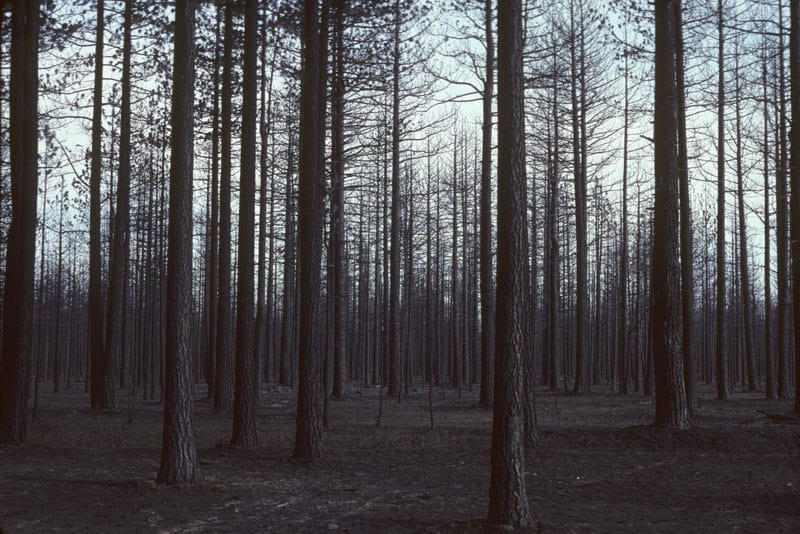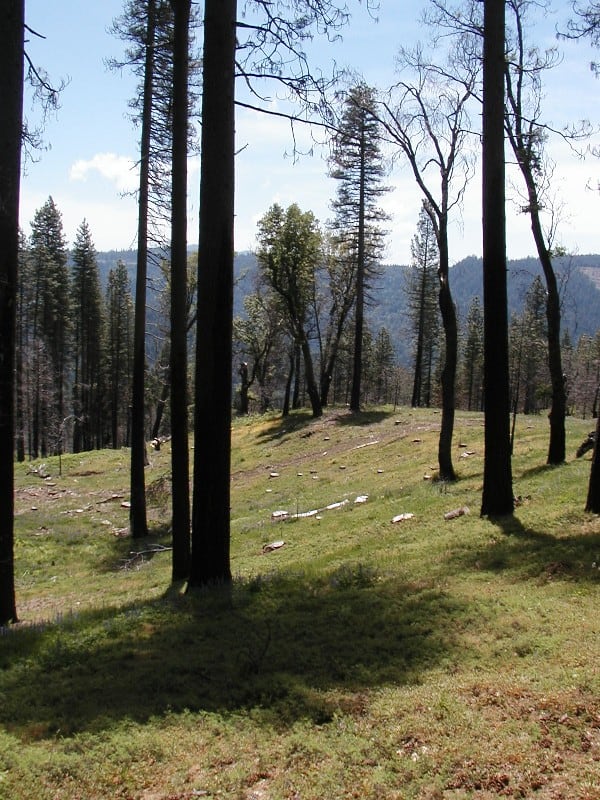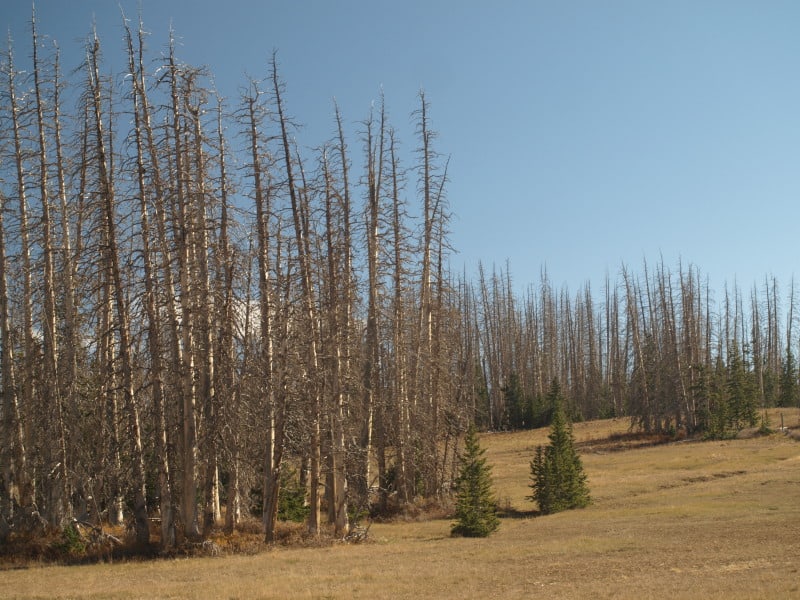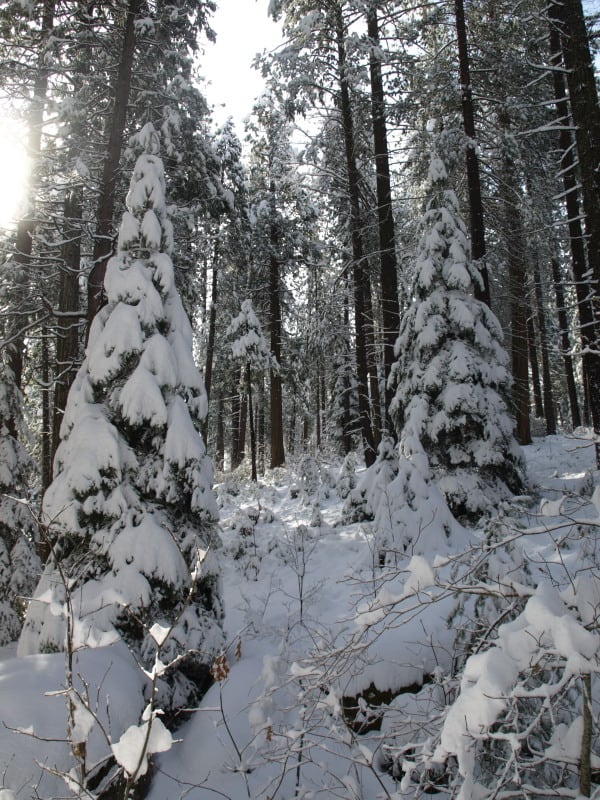This is just a reminder that some of our forests are healthy, and need no management. This view from the Pass Creek area of the Salmon-Challis National Forest shows an idyllic scene that might be similar to the land of 400 years ago. This land is full of the kinds of wildlife people want to see returned to our National Forests. While I was there on assignment, I met a guy who wandered this rugged terrain, recording wildlife sightings. This thin and wiry guy was amazing in how he could gain and lose thousands feet of elevation, day after day.
Photos
Science synthesis to help guide land management of nation’s forests
Key findings from the synthesis were:
Efforts to promote resilience of socioecological systems increasingly consider the interaction of social values and ecological processes in pursuit of long-term mutual benefits and social learning for local communities and larger social networks.
Research indicates that strategic placement of treatments to reduce hazardous fuel accumulations and to restore fire as an ecosystem process within fire sheds can lower the risk for undesirable social and ecological outcomes associated with uncharacteristically large, severe, and dangerous fires, which include impacts to wildlife species of concern, such as the fisher and California spotted owl.
Science generally supports active treatment in some riparian and core wildlife zones to restore fire regimes. However, adaptive management, including experimentation at large landscape scales, is needed to evaluate which areas are priorities for treatment and what levels of treatment produce beneficial or neutral impacts to wildlife species and other socioecological values over long periods.
http://www.eurekalert.org/pub_releases/2013-02/ufs–sst022013.php
Yep, this is what we are already doing on my Ranger District. It is always important to focus on what we are leaving, rather than what is being removed. We still have longstanding limitations of protecting old growth and a ban on clearcutting. The picture is an example of salvage logging just six months after completion.
Utah’s High Elevation Mortality
This picture is located within the Cedar Breaks National Monument, where conifer mortality is quite excessive. There is really not much that can be done with this situation, other than spending lots of money to fell, pile and burn. Within the Dixie National Forest, this mortality dominates the upper elevations. Even at this altitude of over 10,000 feet, the land is very dry for 9 months, except for seasonal lightning storms. Like some of our public lands, we need a triage system to deal with such overwhelming mortality and fuels build-ups. In this example, we are too late to employ a market-based solution, which would do more non-commercial work.
I have seen this area over many years, and have watched as forests die and rot, with catastrophic wildfire being the “end game”. Anyone venture a guess at what will grow here, in the future?
Winter Reflection
It is especially so, in a profession like forestry, that some of us get a chance to reflect on what has happened, and what might happen. Some of us find other ways of being outdoors and enjoying nature. My winter “data collection” involves sampling, organizing and capturing millions of scenic “data points” in a pleasing manner. Sometimes one has an entire winter to look at a problem from a new point of view than they had before. Being more moderate, I keep and cultivate an open mind, welcoming new points of view to scrutinize. Anyone who said that collaboration, consensus and compromise would be easy and painless was lying to you. Like in photography, scientific studies can use composition, depth of field and field of view to adjust what the viewer sees, and doesn’t see. A telephoto lens and a polarizing filter can dramatically affect what you want the viewer to see.
My young nephew called and invited me to take the extra bed in his Yosemite Lodge room. I hustled to get down there and we enjoyed a nice dinner, after I made Isaac and his friend some potent “Snugglers”. The three of us skied at Badger Pass, with glorious conditions the next day. The last morning, I took them to this secret spot along the Merced River. I never fail to get great pictures at this little-known spot, and I greedily sucked up more than my share of nice shots.
California’s Dense Forests Present New Opportunities
Forestry operations and bioenergy have been part of the economic and social fabric in Northern California for decades. A five-year study produced in 2009 by the USDA Forest Service modeled forest management under different scenarios across 2.7 million acres encompassing the Feather River watershed. The model’s time horizon spanned four decades, examining wildfire behavior, forest thinning operations and a range of environmental and economic impacts. It concluded that in virtually every aspect analyzed, managing forest resources and utilizing biomass for energy production provides significant advantages over the status quo.
With acres per wildfire going WAY up, thinning projects seem to be the way to go to reduce both wildfire sizes and wildfire intensities. Again, we have strict diameter limits in the Sierra Nevada, and clearcutting has been banned since 1993.
The link is here
Group Hails Forest Cooperation
I saw a local article about our part of the Collaborative Forest Landscape Restoration Program.
For the first time in many years, loggers and conservation groups are working together and the results have been stunning, according to Katherine Evatt, president of the Pine Grove-based Foothill Conservancy.
The Amador Calaveras Consensus Group has been working in the Stanislaus and Eldorado national forests on projects that are part of a larger national program called Collaborative Forest Landscape Restoration.
The goal is to restore forests for people, water and wildlife, and a report released in December shows some of those goals are being met.
The ACCG Cornerstone Project is one of 23 national projects that split $40 million in 2012. According to the fiscal year-end report for the project, the two forests spent more than $658,000 in CFLRA funds this year, matched by more than $433,000 of other Forest Service funds. There was more than $67,700 in ACCG in-kind partner contributions and more than $1 million in leverage funds from ACCG members. Additional funds included a $196,000 grant from the Coca-Cola Company as well as $283,000 worth of in-service work under stewardship contracts.
The article is here
Update From the Fremont-Winema NF
(One of my pictures from the Biscuit Fire)
From Greg Walden’s Facebook posting:
I just got off the phone with Kent Connaughton, the Forest Service’s Regional Forester for Oregon. In September, I brought Kent to Lakeview to meet with landowners who suffered horrible losses of timber and livestock during the Barry Point fire. These landowners are very concerned with how the Forest Service fought the fire and are trying to figure out how to cope with the losses they’ve suffered
.Kent gave me a status update tonight, and here is what I learned:1) The Forest Service is conducting an independent review of its own operations during the Barry Point fire. It is still in the works, but Kent believes it raises a number of unanswered questions, and he has asked for a more formal review by the states of Oregon and California. He will share a copy of the report once it is completed next month, and I look forward to getting to the bottom of these unanswered questions.
2) Kent has sent a special team into the Fremont-Winema National Forest to ensure there is no disruption in timber supply due to the fires. The Forest Service has also announced it will make 30 million board feet of timber available for each of the next two years, double the current production.
3) Kent also gave me an update on the Forest Service’s work with affected ranchers and landowners on recovery and repair to fences and property damaged during the fire. The Forest Service is putting $100,000 into the repair of fences destroyed during firefighting, and an additional $350,000 for materials to repair fences destroyed by the fire. Additionally, the Farm Services Administration is making $196,000 available to landowners for use in repairs.
It is good news that this fire recovery work continues, but we need to see it through to the finish. I will continue to work with citizens recovering from these wildfire disasters and make sure that all levels of government are helping with recovery as quickly as possible.
“Fuel Treatments Can Address Wildfire Severity”

The Sierra Nevada Adaptive Management Project (SNAMP) is a joint effort by the University of California, state and federal agencies, and the public formed in 2004 to assess how treatments designed by the USDA Forest Service to prevent severe wildfires affect fire risk, sensitive wildlife populations, forest health and water resources. SNAMP is in year five of an ambitious 7-year experiment to evaluate the effectiveness of management strategies to modify fire behavior across the landscape.
SNAMP has examined real-world fires and developed computer models to evaluate wildfire severity and environmental impacts in response to fuel-reduction treatments looking 30 years to the future. In its Northern Sierra project covering roughly 30,000 acres, SNAMP evaluated three different treatment scenarios. In each case, fuels were reduced across approximately one-third of the study area, and all treatments showed substantial reductions in high-intensity wildfire across the landscape, not just treated areas for 20 years after implementation.
This is from California Forests Magazine, and this issue is full of articles about severe wildfires. The whole article is here. The picture is one of mine from the Lassen National Forest’s 1987 Lost Fire.
Zion Cottonwoods
During my recent trip to SW Utah, I was fascinated by the old and large cottonwoods in the canyon bottoms. While they do have good fall color, I was more mesmerized by the hypnotic bark patterns.
A close-up of the bark reveals such interesting patterns to something thought to be more random in nature. This old tree had fallen from last year’s big floods, a completely normal thing for Zion Canyon. It’s truly amazing that cottonwoods can resist so many flash floods over an 80-120 year lifespan. Of course, there could be “micro-evolution” at work here, in this specialized environment of Zion Canyon.
In these narrow slot canyons, only those trees with the strongest roots can withstand the debris torrents that reshape channels and move boulders, like this one lodged under the huge, water-altered cottonwood branch. To the right of this tree is a house-sized boulder. To the left, outside of view, is another giant boulder. Up the canyon is a giant, super-narrow slot canyon, which drains a substantial watershed of solid bedrock. What an awesome experience it would be to find a safe spot to watch a flash flood here.
To see my recent pictures from SW Utah, go here










